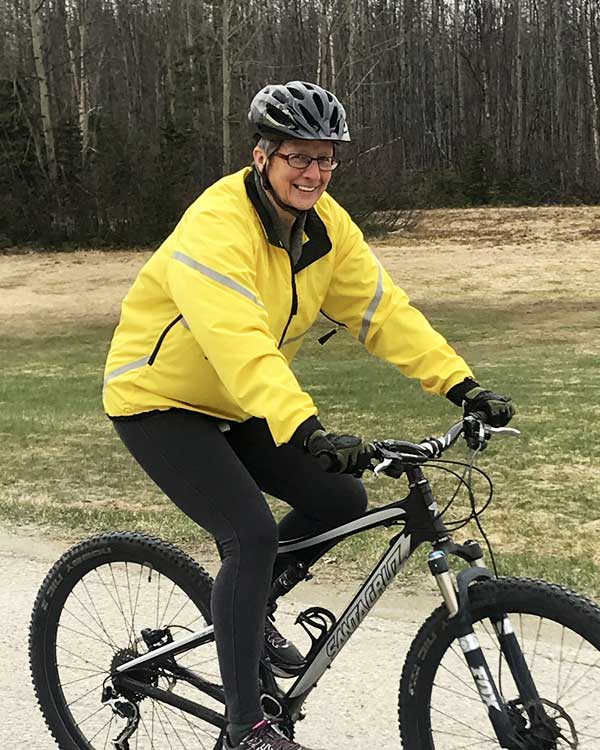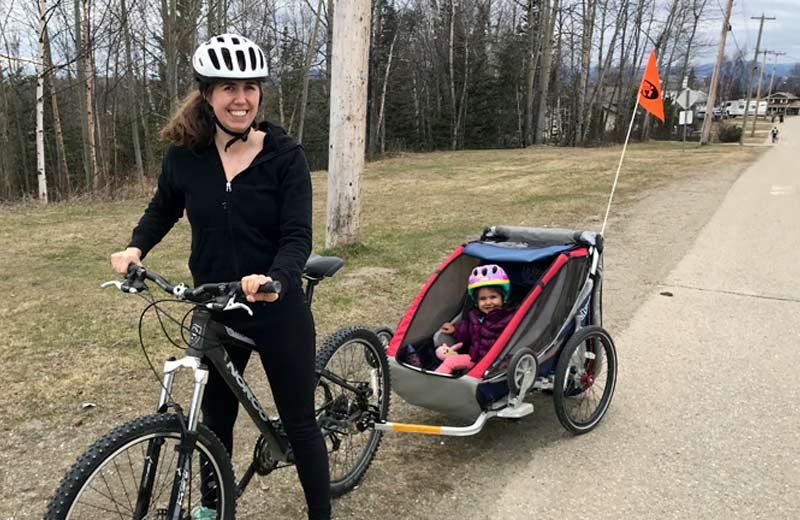How often do you walk, cycle, or wheel to get to work or school? With warm weather arriving across Northern BC, now’s the time to opt for active modes of transportation instead of driving your car everywhere. Active transportation is a great way to kick a sedentary lifestyle, reduce your risk for chronic disease, and also fit in some daily physical activity if you don’t have time to get to the gym.
Beyond the obvious physical benefits, Gloria Fox, Northern Health’s regional lead for physical activity, says active modes of transportation also provide a range of additional health benefits.
“Active transportation improves your mood, concentration, and focus,” says Fox. “It also saves you money that would have been spent on fuel and/or parking fees, and reduces your carbon footprint.”
Active transportation across the North
Active transportation refers to all non-motorized, human-powered forms of travel including walking, cycling, skateboarding, in-line skating/rollerblading, jogging/running, non-mechanized wheel chairing, snowshoeing, and cross-country skiing. People using active transportation are often referred to as “vulnerable road users.” Motorcyclists are also included in this category.
While active transportation has been gaining popularity across Canada for more than two decades, Gloria says there’s still work to be done to make it the normal – and safe – way to travel.
In 2018, Gloria reviewed the Official Community Plans (OCPs) of 48 communities across the Northern Health region, and found that several of the plans promoted active transportation (AT). Some of the plans called for initiatives such as designated bike lanes, improved infrastructure to enable easier mobility between community neighbourhoods, and the creation of detailed maps and trail guides for cycling and hiking enthusiasts.
Gloria says that as local governments revise and refresh their OCPs, Northern Health’s Population and Public Health department will get the opportunity to provide comments and suggestions.
“I aim to leverage this opportunity to indicate what communities could be doing to further enhance access and safety of AT options for their residents.”
Developing multi-use pathways, separated and/or designated bike lanes with appropriate signage, and offering end-point facilities such as bike racks and storage areas are a few examples of actions that show community support for AT and associated benefits to residents’ health and wellness.

Natasha Thorne, regional nursing lead, Injury Prevention, Population & Preventative Public Health, adds that communities can create safer spaces for vulnerable road users by reducing neighbourhood speeds to 30 km/hr.
“Ideally, we could have a system that encourages AT without requiring the burden of safety to be the sole responsibility of the vulnerable road user,” says Natasha.
Get active – be safe
No matter what mode of AT you choose to use, Gloria recommends following these safety tips:
- Make yourself visible by using reflective gear and/or lights for dusk and night conditions.
- Make eye contact with vehicle drivers to ensure they see you coming or entering intersections.
- Learn and follow the rules of the road, including correct turn signals for cycling, when to safely change lanes, and especially how to ride defensively and safely in the absence of designated bike lanes.
- Wear a properly-fitted helmet.
- Pre-plan your route so that you can avoid areas with heavier and/or faster moving traffic as much as possible.
And remember, there is safety in numbers.
“The more people who are out using active modes of transportation, and the more often they do so, the sooner active transportation will be ‘normalized,’” says Gloria. “Drivers will become more accustomed to seeing and sharing the road with vulnerable road users, and safety will be improved.”
Tips on the benefits of active transportation for individuals and their communities
- Northern Health - Pedestrian safety offers everything you need to know about pedestrian safety from Northern Health and its community partners.
- What is Active Transportation? is the Government of Canada produced web page that discusses the benefits of active transportation and how to build it into your life.
- BC Community Road Safety Toolkits is a Government of BC site that supports any municipality looking at ways to keep vulnerable road users (people who walk, cycle or use scooters, etc.) safe, while promoting active transportation.
- BC Active Transportation Design Guide discusses active transportation modes, recommends how communities can increase the quality of the design of active transportation facilities, and how active transportation options can lead to improved quality of life, health, and economic benefits for all BC communities.














Comments